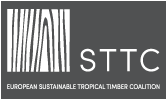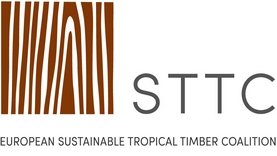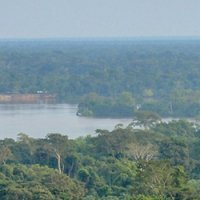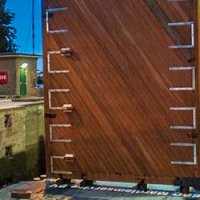Fair&Precious Partners in the spotlight

In the first of a series of interviews with Fair&Precious partners about their companies, business ethos and ambitions for the sustainable tropical timber campaign, we speak with Vandecasteele Houtimport export manager Geneviève Standaert.
How would you describe Vandecasteele; who you are, what you do and what you stand for?
Geneviève Standaert: Vandecasteele Houtimport is a fifth-generation family-run business importing timber and timber products from over 45 countries worldwide. We’re located in Kortrijk, Aalbeke, Belgium, where we specialise in the import, trading and export of tropical hardwood from Africa, Southeast Asia and South America. The company also supplies Scandinavian and Russian Softwood, Siberian Larch, North American soft and hardwood and European Hardwood.
Established in 1883 by Louis Vandecasteele, the company has been passed down through the generations to current owner Stefaan Vandecasteele. Stefaan took over running the company in 2000 and together with son Louis and daughter Margaux, is keeping the company’s family spirit alive. Strong relationships with customers and suppliers based on mutual trust lie at the heart of the business. Also key is the ability to adapt and react to an ever changing, fast-paced industry, enabling Vandecasteele Houtimport to put customers’ needs first and foremost.
Why did you become a Fair&Precious partner?
Becoming a partner of F&P is a natural step towards our main goal, which is to trade exclusively in certified timber from 2025. We’re aiming to become a European ambassador for certified timber. And we believe all our partners, suppliers, customers and co-workers should share that ambition. The more the merrier!
The European tropical timber sector has battled to hold on to market share in recent years. What would you say are its major challenges?
A major task is to convince our suppliers and customers that certification is the way to go, and key for our business in the long term. So supply and price are challenges, as is raising customer awareness of the issues. Fierce competition from alternative materials, greenwashed with expensive marketing campaigns, is also not helping tropical timber’s image.
Do you believe the tropical timber sector can rebuild its presence in Europe?
Yes, if two goals are met. One is that all forest risk commodities should meet the same regulatory requirements as timber. The second is that all building materials should meet equally strict criteria in such areas as carbon impact and circularity. Virgin plastic and recycled plastic should absolutely not be considered a sustainable, green building material.
In which market do you see greatest possibilities for growing sustainable tropical timber sales?
The building materials market offers most potential. Within this sector, architects and building developers make the key specification decisions and should be the prime target for sustainable tropical timber promotion. Governments can also play a role in driving use of natural, sustainable construction materials and curbing use of non-sustainable products.
Do you see new applications opening for sustainable tropical timber in the future?
We can and must recover construction market share lost by timber due to misinformation about fire resistance, often emanating from other materials sectors. In the past, timber formed a core element of even very large buildings, from cathedrals to major industrial units. It may be difficult to persuade some people of the merits of building with wood, but global growth in timber high-rise, which meet strictest fire safety regulations, shows it can be done.
How can the timber sector grow demand for lesser known sustainable tropical timber species?
We can emphasise that it makes better use of the forest and reduces pressure on more popular species. It’s better for supply and for price. To grow sales, we should sell timber by durability, or even by grain structure and colour rather than species. So, we would sell a durability class I product rather than Padouk, or a chocolate brown durability class 3 product rather than American walnut.
What would be your sales pitch for sustainable tropical timber ?
It’s all about selling the right timber for the right purpose. Tropical timbers, in particular, should be sold on their superior durability, class I and 2, which means they can be used externally without potentially harmful chemical treatment. We should also sell it on the basis that using sustainably sourced tropical timber incentivises uptake of sustainable forest management in tropical countries.
Are you optimistic for the future of the sustainable tropical timber sector?
Yes. We have opportunity and momentum – it’s time for our whole industry to engage in promoting certified tropical timbers.





